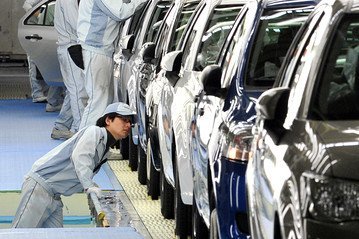What’s Driving Toyota’s Recovery?

Auto executives talk a lot about the importance of building vehicles in the markets where they’ll be sold, the better to avoid getting whipsawed by volatile currency exchange rates. They are putting money behind that talk — consider General Motors Co.’s announcement this week that it will build a Cadillac assembly plant in China, soon to be the world’s largest luxury vehicle market. Toyota recently said it will start building Lexus sedans in the U.S.
But for auto makers that still rely heavily on exports from their home markets, the day when the relative strength of their home currencies to the dollar doesn’t matter has yet to arrive.
In its financial forecast for the 2014 fiscal year, Toyota says it expects its consolidated operating income to rise to 1.8 trillion yen from 1.32 trillion in the fiscal year that ended March 31. Of that projected 479.2 billion yen improvement, 400 billion is projected to come from the effects of foreign exchange rates — that is, a weaker yen.
Cost reduction is expected to contribute less than half as much — 160 billion yen — to the swing. Toyota assumes a 90 yen to the dollar exchange rate for fiscal 2014, compared to an 83 yen to the dollar rate in FY 2013. That 8% difference, applied to a $20,000 car, is equivalent to $1,600.
Analysts say Toyota’s streamlining efforts are making a difference. “ “Ultimately, it’s about the structural changes, about the cost cutting, about the new products. It’s about all of those things because if we go back to Toyota’s darkest hours (in fiscal year ended March 2009), currency wise, we’re in virtually the same position,” said Christopher Richter, a Tokyo-based senior auto analyst at CLSA Asia-Pacific Markets. In the fiscal year ended March 2009, Toyota suffered its worst loss in its history when the yen’s average annual rate was 101 to the dollar.
Nouvelles connexes


